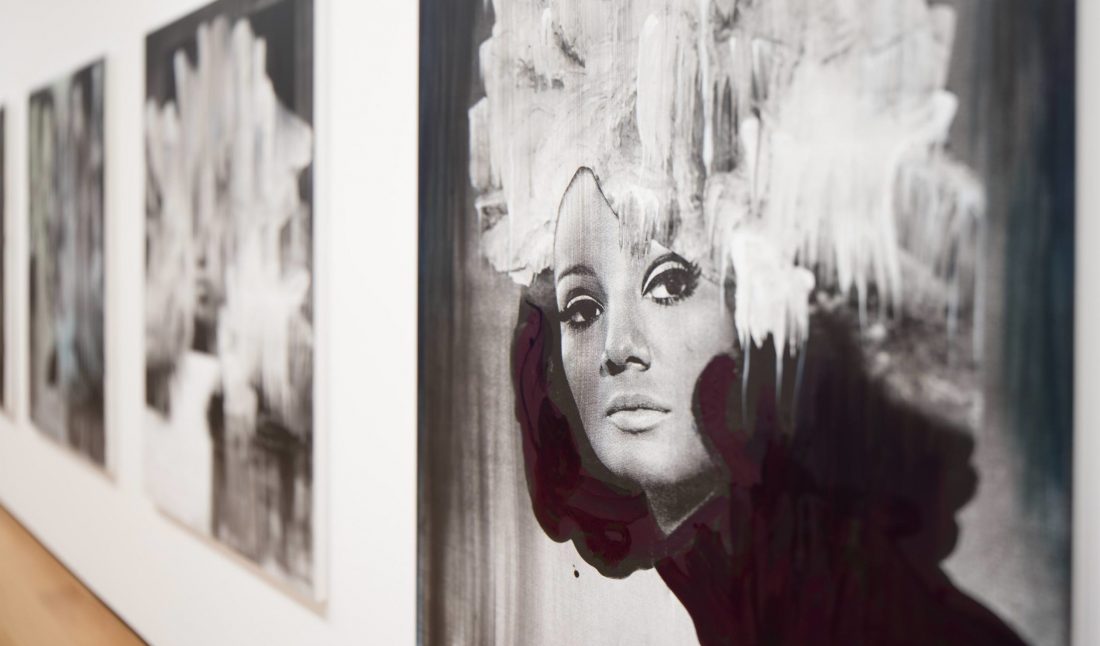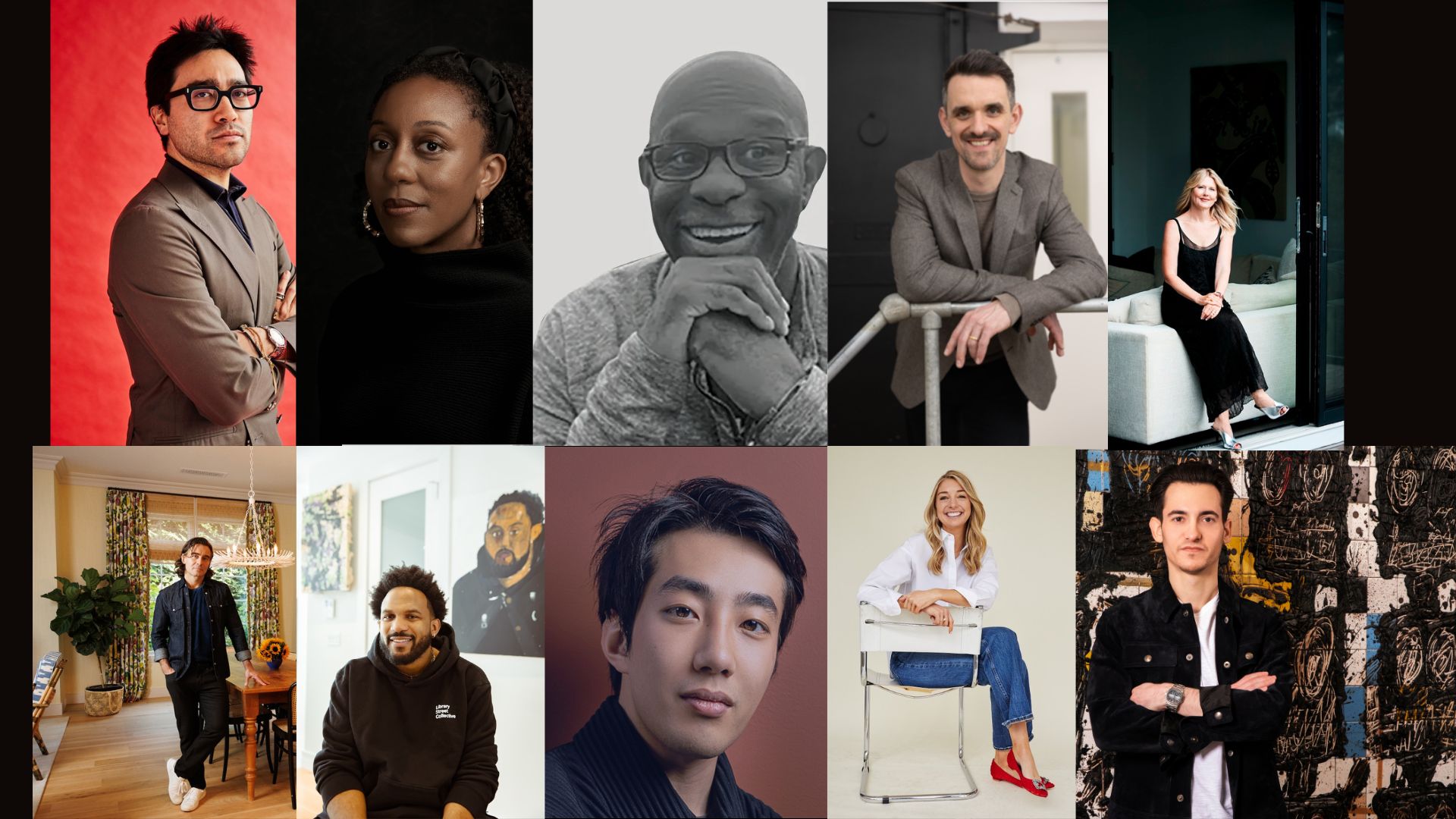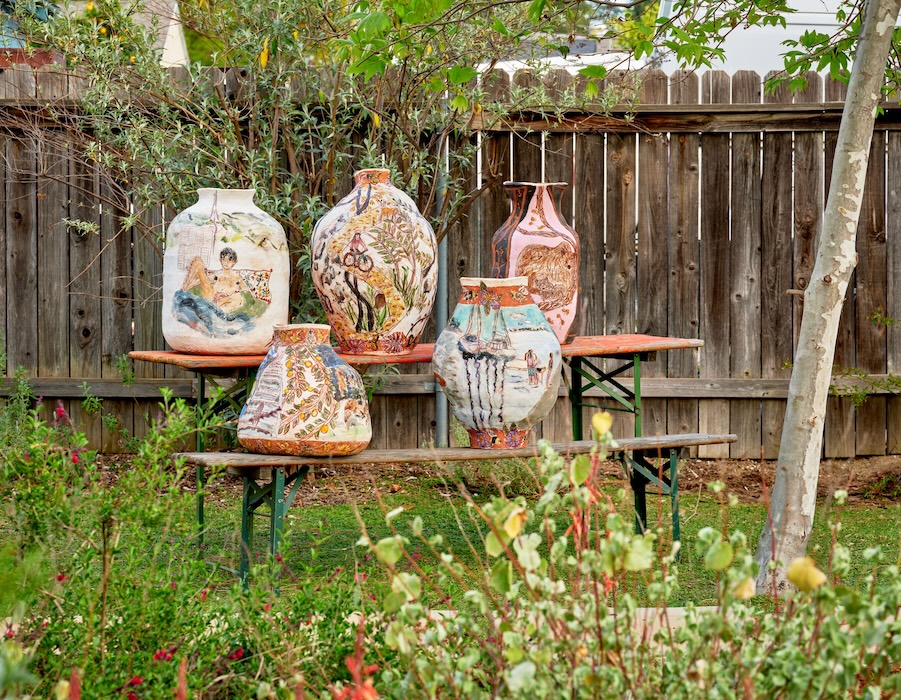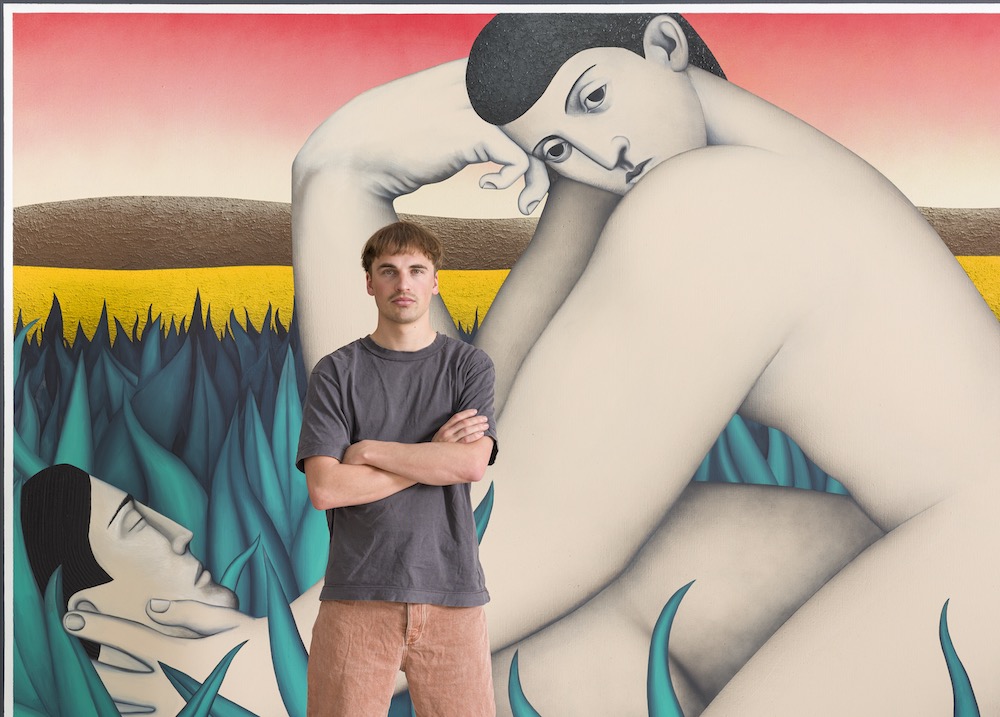In 2015 Lorna Simpson, an artist known primarily for her photographs, works on paper, and collages, debuted a completely new medium in her practice: painting. And she did on arguably the biggest art world stage, the 56th Venice Biennale. That’s a bold choice for any artist, but Simpson is someone who is particularly fearless. She likes being unsure of things. She likes surprises. And shifts in her practice are nothing new. Before painting, it was drawing. And before that it was film, or collage, or photography. She seems to have always been able to feel a sense of freedom in her practice, something she attributed early on to not having the assurance of success, as a young woman and young black artist.
Since that Venice Biennale, Simpson has gone on to show her paintings at Salon 94 last fall, the Museum of Modern Art Fort Worth last fall and winter, and new paintings at Frieze New York with Hauser & Wirth. This spring, her portfolio of photographic portraits of 18 women in the arts was published for Vogue. While she was preparing for that series of shoots, we spoke with Simpson from her studio in Brooklyn.
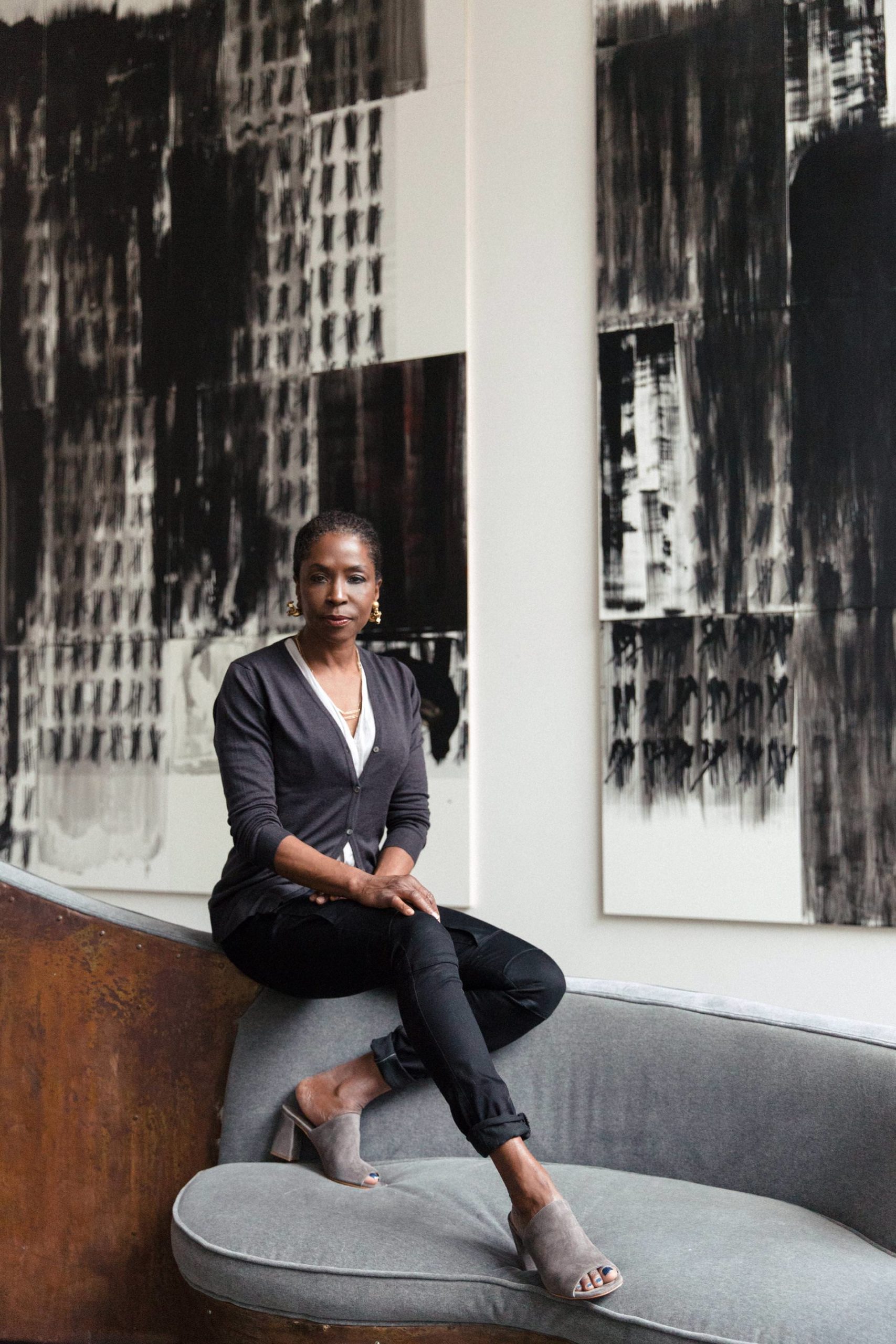 Portrait by Leslie Kirchhoff
Portrait by Leslie Kirchhoff
WHITEWALL: So I have to tell you, for this issue, we’re also interviewing Pamela Joyner. And when I spoke with her, she told me that during your residency at her place in Sonoma, there was an earthquake, and she has a theory that it literally shook you into the new direction of painting.
LORNA SIMPSON: Yes! [Laughs]
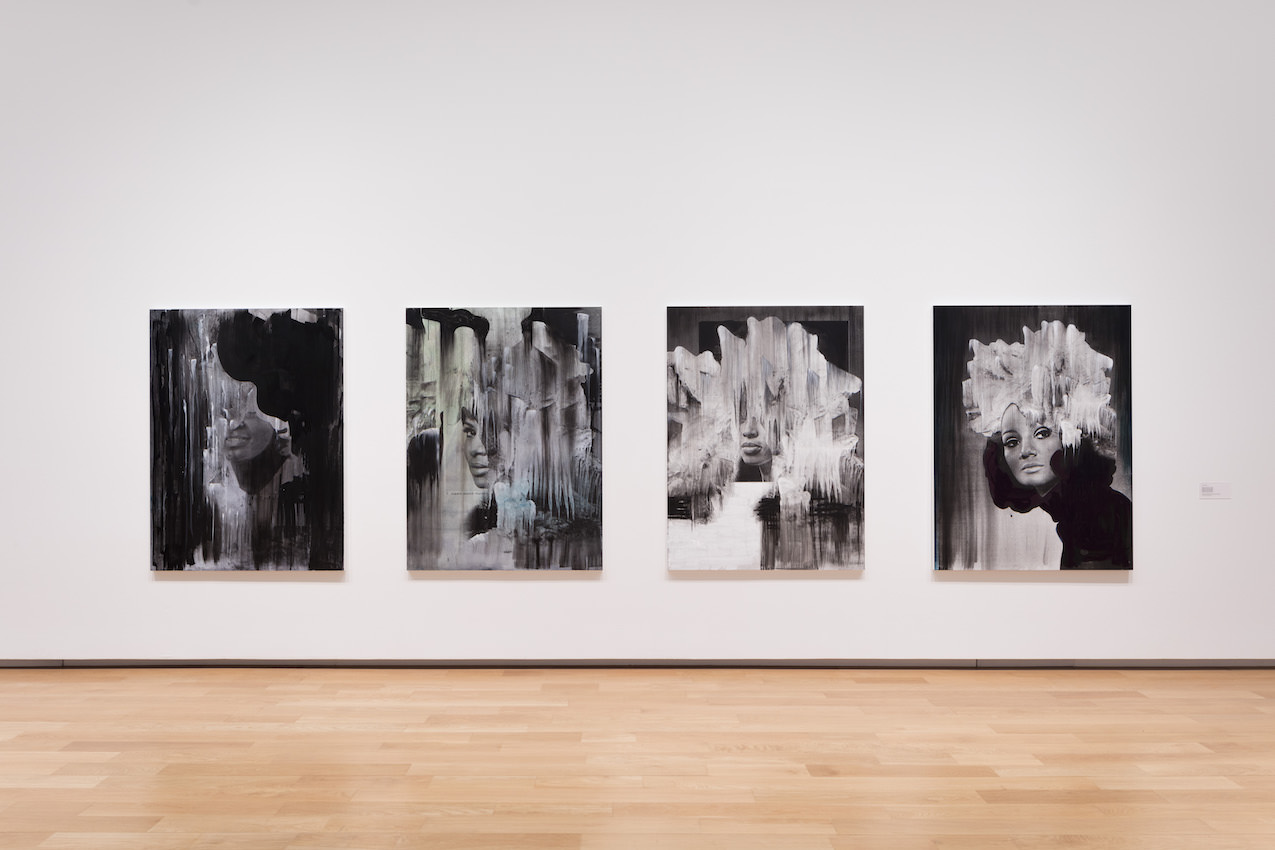 Installation view of “Focus:Lorna Simpson” on view at the Moern Art Museum Fort Worth (November 19, 2016 – January 15, 2017)
Installation view of “Focus:Lorna Simpson” on view at the Moern Art Museum Fort Worth (November 19, 2016 – January 15, 2017)
WW: So tell me about this shift to painting.
LS: I’d been working in drawings for five years before that. I studied painting in undergraduate many years ago, but I started playing with that as a way to open up another avenue to kind of my practice, not thinking so much about it being a whole new body of work, just playing with materials and the ideas. From that, I just thought I should just try stabbing at it. Why not?
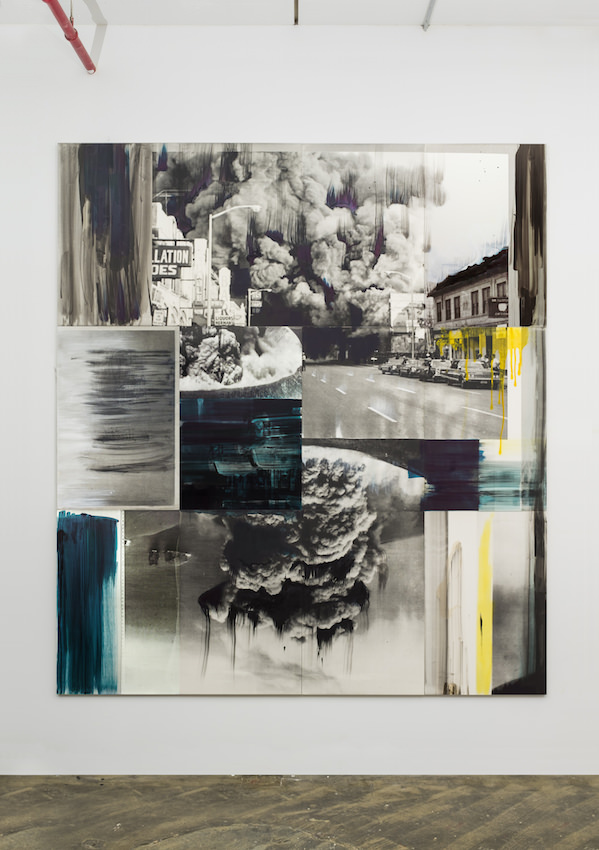 Lorna Simpson
Lorna SimpsonDetroit (Ode to G.)
2016
India ink, acrylic, and screenprint on Claybord
108 x 96 inches
Courtesy of the artist and Salon 94
It’s been really interesting. The ideas and photographs from the collages have become some of the images I work with in the paintings. The painting does take from all these different areas of my work.
WW: What was it like to show that new direction for the first time at one of the biggest shows for the art world, the Venice Biennale?
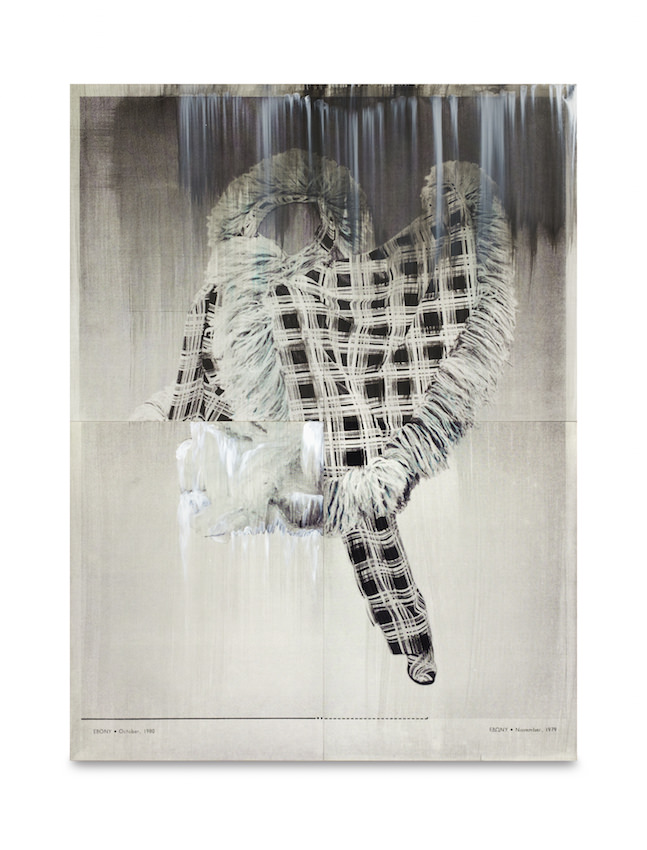 Lorna Simpson
Lorna SimpsonLeft
2016
India ink, acrylic, and screenprint on Claybord
48 x 36 inches
Courtesy of the artist and Salon 94
LS: Exciting. I think I’m a bit fearless. I kind of thought, “Okay I’m going to make these, however they come out or whatever they are, that’s what it’s going to be.” I don’t think about what the response is going to be. That can sabotage moving forward, worrying that I need to make decisions to try to abstractly fulfill some kind of expectation. So I went in thinking, “This is just what I’ve done and that’s it.” And it got a really great response.
Pamela was really generous with me in the midst of figuring out career stuff, but also figuring out in terms of my relationship. I was going through a huge divorce. It was this kind of very special time of just being by myself in Sonoma with the earthquake and Pamela and her husband laughing and tasting wine and coming up with some really interesting work. I needed a moment to not forget about the work that I had made, but kind of just play with it and not look at it as such a big career shift. To just start making stuff. But of course being in the earthquake and having the shit scared out of me, it was like, “I’ll just do this!”
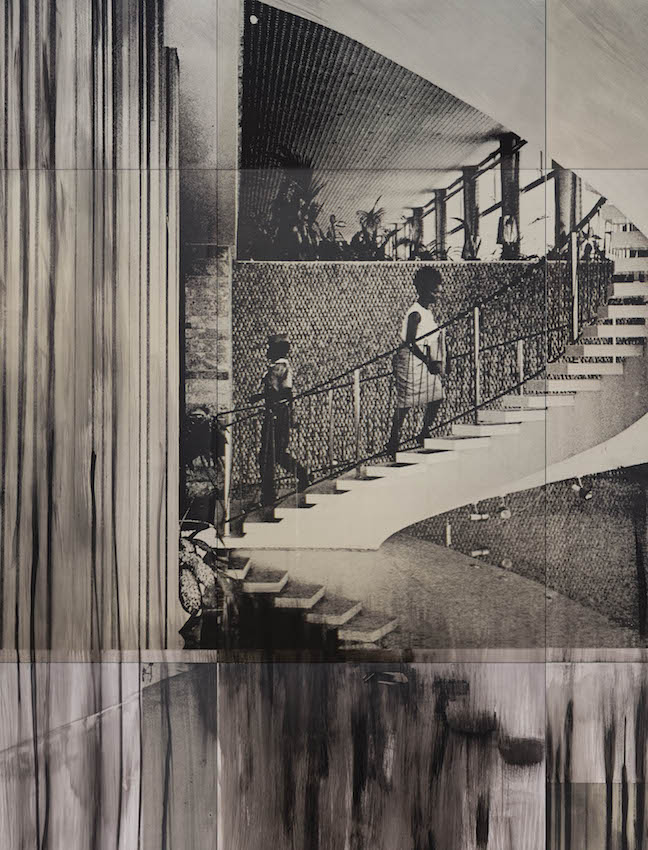 Moveableness
MoveablenessLorna Simpson
Moveableness
2015 (detail)
Ink and screenprint on Claybord
108 x 72 x 1 inches
Courtesy of the artist
WW: You were shaken out of your comfort zone.
LS: Yes, and I don’t usually do that at all. I don’t do artist retreats. I thought I’d have time to think. I think it’s not so much about the making of the work as finding the headspace to think of new ideas.
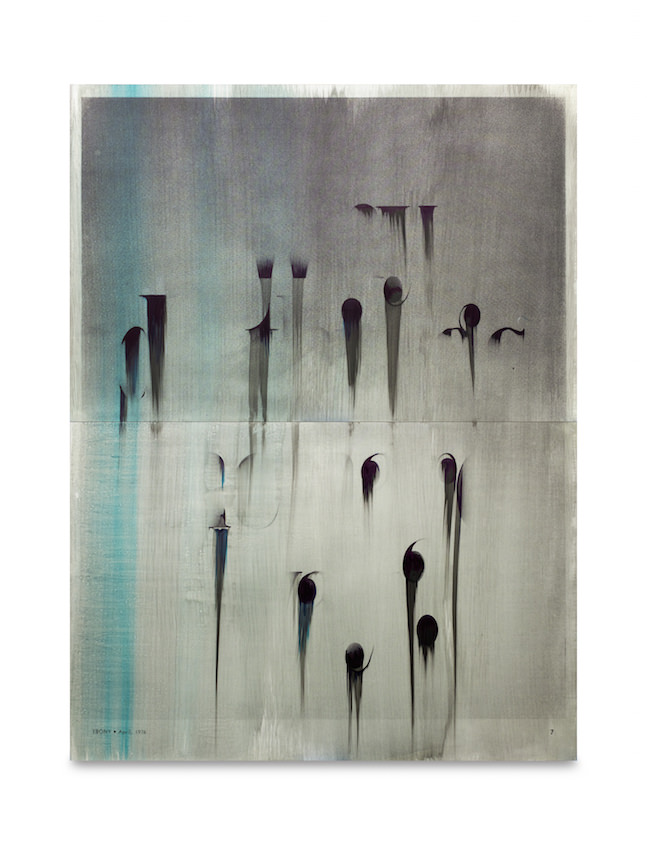 Lorna Simpson
Lorna SimpsonSerif Code #1
2016
India ink and screenprint on Claybord
48 x 36 inches
Courtesy of the artist and Salon 94
WW: So are you still painting?
LS: Yes, very much so. For the next series of work, I’m focused on doing that in a very particular way. And learning from it. It has a momentum for trying to figure out what I want to do next with these images.
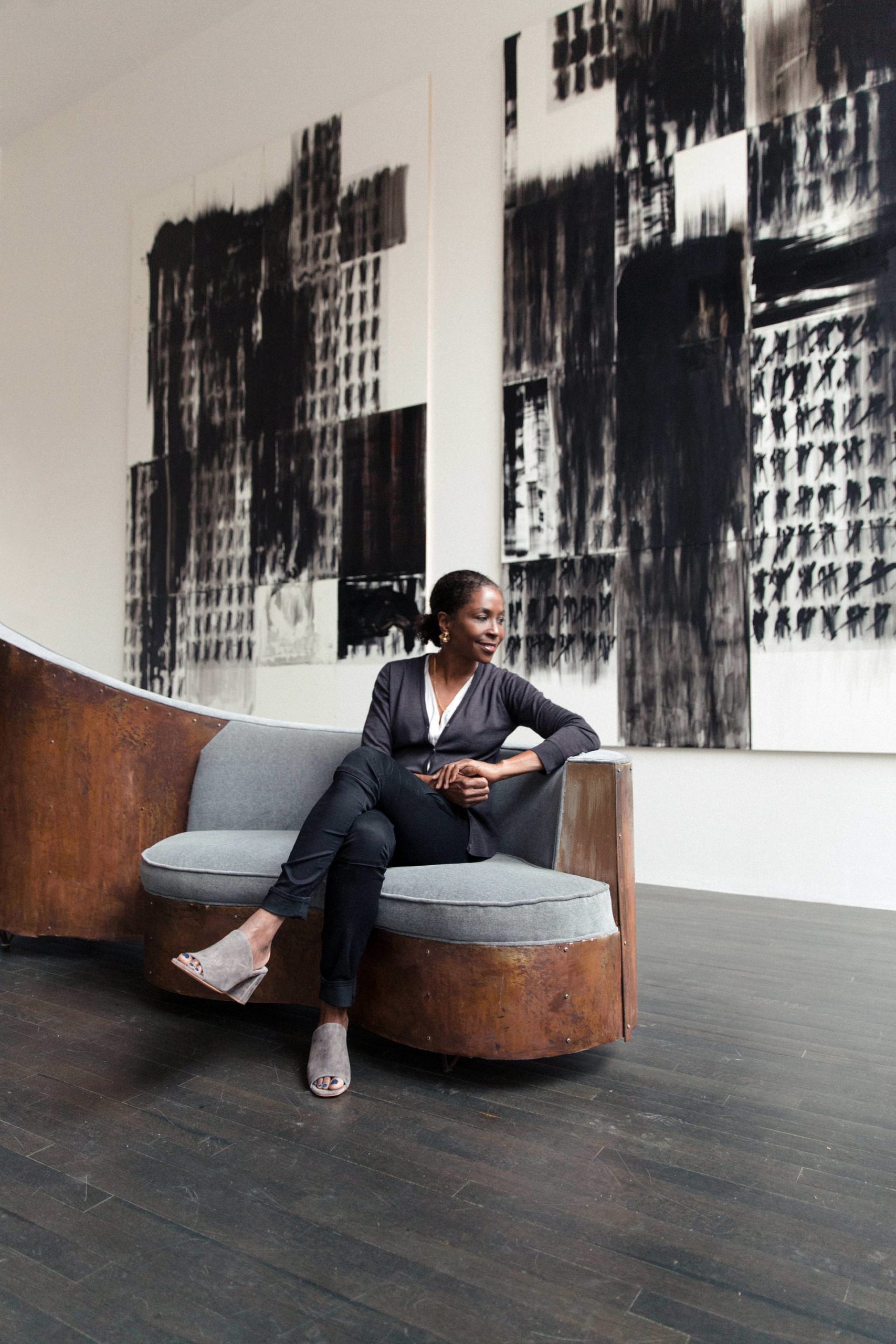 Portrait by Leslie Kirchhoff
Portrait by Leslie Kirchhoff
WW: You’ve said that your painting works in parallel with collage. In the paintings, are you working with similar found photography as in the collages?
LS: I’m an avid collector of photography, vintage photography you can get in flea markets or online through eBay. That’s also been part of the photographic side of what I do in terms of appropriating imagery. It’s from that arena to Ebony magazine, advertisements, and editorial photographs from anywhere ranging from the forties up until the seventies or eighties.
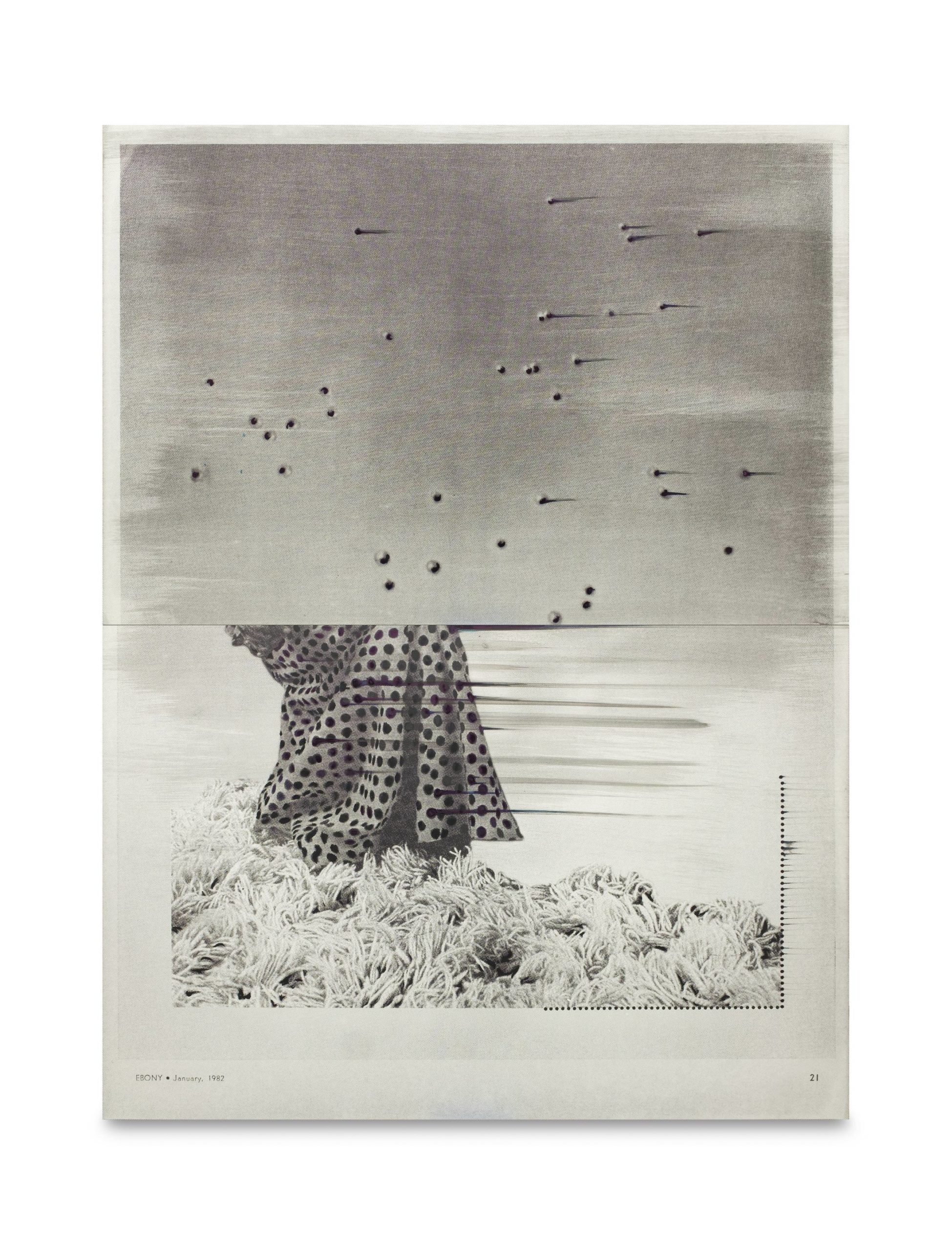 Lorna Simpson
Lorna SimpsonPolka Dot & Bullet Holes #1
2016
India ink and screenprint on Claybord
48 x 36 inches
Courtesy of the artist and Salon 94
They all come from the same sort of source material. In the Fort Worth show, there was a piece where the head is from Ebony magazine, the body is an AP photo of a museum statue. I created this piece called Famous Statue Damn and Famous Statue Volcano. And I’m doing now these bronze bracelets that belong to that statue, a more sculptural piece
All that is to say I use the language of my own work as this way of building out. These things represent a trajectory. It starts to get a life of its own.
WW: One body of work gives birth to different pieces and you can follow that.
LS: Or different themes, or for that matter, different objects that are related to the subject of the statue itself.
WW: I was reading an interview where in talking about your drawing, you said you like, “trying things that might be stupid, doing something unknown to look for a trajectory other than the one the work is known for. Not every drawing I do is successful.” Is it the same for painting?
LS: Oh, absolutely. I feel like I’m new at it. There is stuff I paint over, but I think that’s part of the process, not to be so attached to everything, or that everything has to be perfect. It’s a process of trying to get at something or shifting gears and doing something else. What I decide in terms of the imagery becomes more intuitive. But it does have to be engaged conceptually; it has to make sense or speak to me in a structural way. I still make that demand of the work, that it has some kind of interesting conceptual framework to it.
WW: Of your films, you’ve spoken about the kind of emotional reaction you want to evoke, something that is beneath the surface that drives it along, but isn’t the obvious subject of the film. What kind of emotional reaction are you hoping to elicit in your paintings?
LS: Well, I can’t predict that. I think if there is some emotion connected to what I am doing and somehow that does translate, I don’t know how that translates. I can’t assign a specific emotion that people should be receiving from it. If in the making of it I have a very intense, emotional connection to what I’m doing, then there is something that the viewer will get from it emotionally.
In other work that requires production, I’ve come up with the conceptual framework and then it needs to be built out in product, I’m a little bit more distanced emotionally. As opposed to the paintings, when going into the studio, if I’m having a shitty day, I’m going to have a shitty day making the paintings. I can’t kind of separate myself as much as I could before in the nature of my own physicality in it. So that’s been interesting. That’s kind of been a new thing.
I think in some ways that’s taught me something about the scope of emotions. I have to work with my own raw emotions while I’m working on different things; that’s a different avenue that I hadn’t normally gone down. It’s between me and myself and that was really new to experience. And good. It was freeing.
WW: Was it a little scary?
LS: Probably, yeah, it was scary. Scary in the sense that it’s okay to be completely distraught or emotionally unsettled or to just work with that and make the work.
WW: Speaking of it being freeing, you’ve said, “As a young woman, and a young black artist, I felt like I had the freedom to do whatever I wanted, because I didn’t quite have the assurance of success, but I had a strong desire to create as many of my personal friends who were artists, writers, curators, and filmmakers did.” As an artist who has had success now, has that affected your feeling of freedom in your work in any way?
LS: I think it only strengthened. I think that it is the way that it should be. Even for young people now, in terms of thinking about the work that they make, you’ve got to satisfy what it is you want to make, that desire, and be true to that. And that success is sweet if it’s uncompromised.
We should be free to make the work that we want at any point in our career, starting out, or midcareer. I think that’s really important.
WW: You recently told Artforum, “I am always surprised because I feel there are so many people—other artists who were around when I was in my twenties—who I really loved and appreciated, and who deserve the same attention and opportunity, like Howardena Pindell or Adrian Piper. There are tons of them. It is about race and being African American, but it’s also about gender—and there are just so many women who either should be given more credit or have more vibrant careers for having paved the way. It’s a little bittersweet. Things should be better. But then, that’s just where we are.” How do you think that changes? How does this notion influence your relationship with younger female artists who look to you as a mentor?
LS: I am really conscious of it when I’m talking to younger women about the work that they are making. To encourage that they make the work they want to make, fearlessly. It’s important to have an understanding of art history and the work of other artists and take an interest in educating oneself about that. And I’m saying beyond art school, just on a day-to-day level, being aware of art history in terms of the United States, Latin America, Europe, and contemporary African art as well. So within that scope I think once one pulls back and really gets informed about the scope of, in particular, women artists, that it’s quite broad; they should just strive to dream and to make work as fully as they should, and that that’s a lifetime thing.
That is something you continue to do that over the course of one’s life in terms of that kind of dedication to one’s work. Fighting the battle of trying to change the way or that people write about or value women’s work is important, but I think also for young artists it’s important for them just to start with making the work that they want to make for themselves.
This article is published in Whitewall’s spring 2017 Women in the Arts issue.






